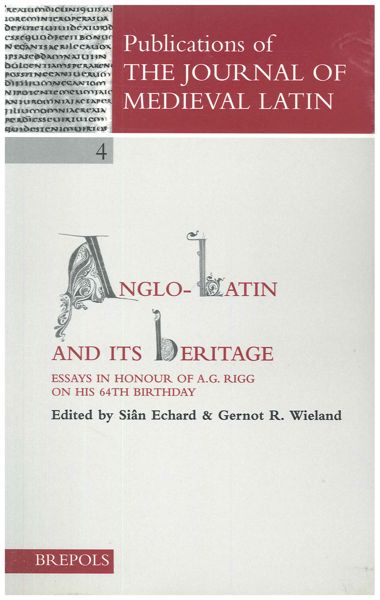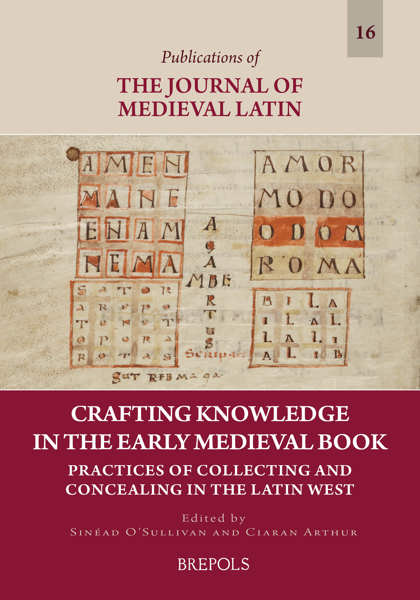
- Pages: approx. 500 p.
- Size:178 x 254 mm
- Illustrations:12 tables b/w.
- Language(s):English, Latin
- Publication Year:2026
- € 115,00 EXCL. VAT RETAIL PRICE
- ISBN: 978-2-503-61973-6
- Paperback
- Forthcoming (Feb/26)
- € 115,00 EXCL. VAT RETAIL PRICE
- ISBN: 978-2-503-61974-3
- E-book
- Forthcoming
*How to pre-order?
This groundbreaking new study examines how around 1100, a poetic renewal took hold of Latin writing that had decisive consequences for subsequent literary developments in Europe.
Wim Verbaal is Professor of Latin Language and Literature at Ghent University. His research focuses on Latin poetics in medieval literature, the cosmopolitanism of Latin literature, and the impact of classical paradigms on modern Europe. He also translates from Latin and addresses the challenges of translating cosmopolitan languages.
“Loire Poetics is an ambitious study that will be indispensable for all students of European poetry (not just Latin poetry) from the central Middle Ages. It presents bold arguments about the character of a new poetics emergent from the late eleventh century. The author's claims, while expansive, are built patiently from probing discussion of several dozen individual poems.
By choosing to publish his monumental study in English, the author performs an important additional service, since the impressive artistry of the poets at issue—the giants Hildebert of Lavardin, Marbod of Rennes, and Baudri of Bourgueil, but also less familiar figures, such as Geoffrey of Reims—remains somewhat underserved by anglophone scholarship.
Professor Verbaal’s expert guidance should attract new students to these authors through his contextualized close readings and accompanying translations. The latter are often inspired, revealing a rare sensitivity to the idiom, tone, and pace of the originals.”
–Christopher A. Jones (The Ohio State University)
Introduction
Status quaestionis and presentation of the poets and the methodology folllowed
1. Philology and Theology
2. ‘Loire’ poets
3. From poem to poet
1. A poem and its world: Mapping poetry
Starting from the poems that are read without immediately presenting the poets, the introduction already gives the general outlines of the entire book.
1. How to Read a Poem
2. Preliminary Poetics
3. Some Poets and some Poems
2. Poets on poets: Poetical criticism
Attention is paid to the way these poets evaluate the work of their peers and what this teaches us about their own approaches to the sense of poetry.
1. Hildebert of Lavardin: A “Priestly” View
2. Geoffrey of Reims: An Emulator’s View
3. Marbod of Rennes: An Existential View
4. Literary Criticism around 1100
3. Poems to poems: poetical renewal
The chapter analysis the renewal of these poets in comparison to their more traditional peers.
1. Masters in poetry: models
2. Masters in poetry: teachers
3. Masters in poetry: pupils
4. Masters of poetry: renewal
5. Masters of poetry: contrasts
4. Poems with a Past: Loire classicism
The problem of the classicism in modern evaluation of the poets and their poetics.
1. Classical Antiquity at the Loire
2. Using the Classics: Marbod and Sigebert
3. Re-writing the Classics
4. Re-voicing the Classics
5. Re-viving the Classics
6. Re-telling the Classics
7. Conclusion: Being a Classic
5. Poems and Poetry: Toward a Loire Poetics
Attempt to construct the general poetics behind the renewal of these decades.
1. Deconstruction and interconnection: the writing of verse
2. Creating consistency: style and genres
3. Conceiving fictionality: topics and textual realities
4. Loire poetics: teaching poetry in poetry
5. Conclusion: A Poetics of the Loire
6. Poems and their Families: Poetic contamination
Analysis of the way the poems are transmitted and what this teaches us about how to approach the mass of anonymous collections.
1. Books, Booklets, Collections: Baudri
2. Composing Books: Hildebert
3. Decomposing books: Marbod
4. Poetry books
5. Conclusion
7. Poets and their Worlds: historical background of the new poetics
This chapter wants to put the poets, their poems and the new poetics in their historical frame, showing to what extent some of these poets succeeded in transmitting an image of themselves that is denied by historical factuality.
1. Colouring poetics
2. Political Poetics
3. Silent poetics
4. Armed poetics
5. Conclusion
8. Conclusion
Conclusions are drawn from the preceding book as to the meaning of these poets for the following generations. This is illustrated by the writing techniques of Bernard of Clairvaux, Peter Abelard and William IX.
1. The School and the Monastery
2. The School and the Schools
3. The School and the Court
4. Conclusion: Literature of the Schools
Appendices
1. Overview of commented texts
2. Marbod’s Editio Princeps, Content and Concordance
Bibliography




